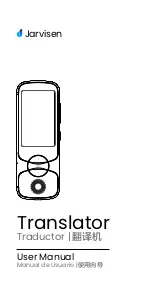
EXi: STR-1 Plucked String
244
Frequency Offset
[–10.0 Hz … +10Hz]
This adjusts the pitch by increments of 0.1 Hz.
Frequency Offset
is different from
Tune
in that, when
used to detune the two oscillators, it can create a
constant beat frequency across the range of the
keyboard.
Pitch Slope
[-1.00…+0.00…+2.00]
Normally, this should be set to the default of
+1.00
.
Positive (+)
values cause the pitch to rise as you play
higher on the keyboard, and
negative (–)
values cause
the pitch to
fall
as you play higher on the keyboard.
When this is set to
0
, playing different notes on the
keyboard won’t change the pitch at all; it will be as if
you’re always playing C4. This can be useful for
special effects sounds, for instance.
If you want to create more complex effects, you can use
one of the Key Track generators as a source for Pitch
Modulation AMS.
Ribbon
[-60…+60 semitones]
You can use the ribbon controller for pitch-bend. This
parameter specifies, in semitones, the ribbon’s pitch-
bend range.
Positive (+)
values make the pitch rise when you press
the ribbon controller to the right of center, and
negative (–)
values will cause the pitch to fall.
When you lift off of the ribbon, the pitch will snap back
to the center (unless you’re using the SW1/2 “Ribbon
Lock” feature). So, by tapping on the right edge of the
ribbon and then releasing quickly, you can create
guitar-style “hammer-on” effects.
JS+X
[-60…+60 semitones]
This sets the maximum amount of pitch bend, in
semitones, when you move the joystick to the right.
For normal pitch bend, set this to a positive value.
JS-X
[-60…+60 semitones]
This sets the maximum amount of pitch bend, in
semitones, when you move the joystick to the left. For
normal pitch bend, set this to a negative value.
4-3b: Portamento
Portamento lets the pitch glide smoothly between
notes, instead of changing abruptly.
Portamento and MIDI
If Portamento is either enabled for both the String and
the PCM, or off for both, then MIDI CCs 5 (Portamento
Time) and 65 (Portamento on/off) affect both the
String and the PCM.
If Portamento is enabled for only one of the two, only
that element can be affected by the MIDI CCs. The
other element will always have Portamento off,
regardless of the MIDI CCs.
Enable
[Off, On]
On (checked):
Turns on Portamento, so that pitch
glides smoothly between notes.
Off (unchecked):
Turns off Portamento. This is the
default state.
Fingered
[Off, On]
This parameter allows you to control Portamento
through your playing style. When it’s enabled, playing
legato will turn on Portamento, and playing detached
will turn it off again.
This option is only available when Portamento Enable
is turned on.
On (checked):
Turns on Fingered Portamento.
Off (unchecked):
Turns off Fingered Portamento.
Mode
[Constant Rate, Constant Time]
Constant Rate means that Portamento will always take
the same amount of time to glide a given distance in
pitch - for instance, one second per octave. Put another
way, gliding several octaves will take much longer
than gliding a half-step.
Constant Time means that Portamento will always take
the same amount of time to glide from one note to
another, regardless of the difference in pitch. This is
especially useful when playing chords, since it ensures
that each note in the chord will end its glide at the
same time.
Time
[000...127]
This controls the portamento time. Higher values
mean longer times, for slower changes in pitch. When
Time
is set to
0
, the pitch will be reached instantly–just
as if Portamento
Enable
was turned
Off
.
AMS
[List of AMS Sources]
This selects an AMS source to control the
Portamento
Time
. For a list of AMS sources, see “AMS (Alternate
Modulation Source) List” on page 967.
The modulation occurs only at note-on. This means
that you can change the time for the
next
pitch glide,
but you can’t change any glides which are already in
progress.
Intensity
[-127…+127]
This controls the depth and direction of the
Portamento Time
AMS modulation.
4-3c: LFO
LFO Select
[LFO 1, LFO 2, LFO 3, LFO 4,
Common LFO]
This selects an LFO to modulate the PCM Oscillator’s
pitch.
The
LFO Intensity
,
JS+ Y Intensity
, and
AMS
are all
summed together to produce the final amount of LFO
pitch modulation.
LFO Intensity
[–48.00…+48.00]
This controls the initial effect of the LFO on the pitch,
in semitones, before any JS+Y or AMS modulation.
Negative (–)
settings will invert the phase of the LFO.
Both the String and PCM Pitch LFO Intensities are
scaled by MIDI CC#77.
Summary of Contents for Electronic Keyboard
Page 1: ...Parameter Guide Parameter Guide ...
Page 2: ......
Page 180: ...Program mode EXi 170 ...
Page 290: ...EXi STR 1 Plucked String 280 ...
Page 572: ...Sequencer mode 562 ...
Page 700: ...Global mode 690 ...
Page 751: ...Insert Effects IFX1 IFX12 Routing 741 Fig 2 3a Fig 2 3b ...
Page 902: ...Effect Guide 892 ...
















































